 |
| HOME | GLOBAL | DISTRICTS | CLUBS | MISSING HISTORIES | PAUL HARRIS | PEACE |
| PRESIDENTS | CONVENTIONS | POST YOUR HISTORY | WOMEN | FOUNDATION | COMMENTS | PHILOSOPHY |
| SEARCH | SUBSCRIPTIONS | JOIN RGHF | EXPLORE RGHF | RGHF QUIZ | RGHF MISSION | |
|
|
|
Joseph L. Kagle, Jr. Rotary Essays
|
|
A Personal Observation of the RI LA Convention: (By a senior 76 year old Rotarian of 40 years of service, the last 23 with perfect attendance) Also see RGHF's 2008 Convention Events
Los Angeles is known for its bigness, its movies, its celebrities and its over-size “everything.” The idea of going to a Convention of Rotary International in Los Angeles, California, USA at one of the largest convention centers in the world with at least 22,000 other Rotarians is exciting and intimidating. We booked our flight early and got a great price from Continental (who even gave us free snacks on the way there and a free lunch with soft drinks on the way home to Houston.) We were overjoyed looking forward to seeing some of the people in our eClub (ten attended) who we knew only in cyber space (on the Internet), finally face to face, hug to hug. We were so excited about the coming Convention that we totally overlooked the noontime traffic on the freeway as we drove to our hotel. We did not overlook the “over-size” bill for taxi fare (and determined to take the shuttle when we left.) Our final hotel, which we thought we choose through Rotary, had been changed to the Westin Bonaventure, an upscale, uptown glass, four tower wonder with everything that you ever wanted in a spa experience (excluding the price.) So even as we came into Los Angeles, there was the experience that matched the movie title, “The Good, The Bad and The Ugly” to start our 2008 Convention visit. We were both seniors in good health (although no one had told the hotel on the front end so no discount for seniors was given when we left.) We were given a room on the 23rd floor of the left hand tower, looking down on the garden:
Since I had helped to create most of the signage for two booths, the Rotary eClub of the Southwest, USA, and the Rotary Global History (where I was present Chairman/President- a position that I would hold again in 2008-2009,) I stopped and admired how well the booth was arranged by others who came early.
The Hall of Friendship was a gigantic room with numbers into the thousands denoting each booth of service or booth for sales. Since Birmingham, England was the next convention stop, it had its own two-booth location centrally located with advisers to sign you up “right now” for June 2009. Anyone walking into the Convention Center, as we did since there was a reception outside the Friendship Hall for Rotary Global History where I was to be honored with a 1905 Society medal, was impressed with the massive, industrial architecture and the size of the structure. I knew at first viewing how a flea must feel when dropped into a large cardboard box. The balcony was also vast, yet the reception was intimate and lovely. In the Hall Of Friendship, a hamburger cost over $6.00 and a sofa drink over $3.00. We did not eat there very much since our hotel had high, middle and low cost dining (all exceptional.) This is a view of the ceiling at the LA Convention Center as one walked through the doors:
After the reception at the convention center, we went directly to the Los Amigos outdoor party on a balcony across from our hotel, honoring PRIP Frank Devlyn. The lines for the buffet were long (not compared to the later ones at the Convention Center but still long) and the food had almost vanished when our table was called to get in line. Our tickets allow bottomless glasses for wine. If the food was scarce, the wine was ever-flowing through the night. Of course, Frank gave a speech. Afterwards, we crashed and slept well, with wine-induced thoughts of sugar plums dancing in our heads and the nightmare realization that we had to get up early again as I had to chair a breakfast meeting at 7:00 a.m. at the Convention Center. Five-thirty comes early without an alarm clock and we waited for a taxi (the shuttle bus would start at 8:00 a.m.) at the entrance to the hotel. That was when the “bad” started! Running for the taxi (which was stopped in the No Parking Zone,) I stepped off a curb which I did not notice was there and learned to fly (but not to fall.) I injured my shoulder and my knee. Before that, I attended the Convention on two legs; after that fall, it was a one-leg event. Do not remember much of the breakfast where I stood, holding tightly to the podium to stay upright, but if you have done this before you proceed by instinct and experience. I do remember the smile when I sat for a long time after my talk before limping to our Fellowship booth, resting there too, then struggling to the shuttle bus and returning to the hotel. Like a Tale of Two Cities: “It was the worse of times; it was the best of times.” My injury impeded my movement at the Convention but it also made me empathize with others in pain that had come to the convention. It made me look closer at the makeup of this worldwide Rotary attendance where others were also limping or shuffling along. As President Wilf Wilkerson said in the opening address, Rotary had suffered a loss of members in North America (with many of the Rotarians getting older and less young individuals joining.) The 2008 LA Convention for Rotary International was a macrocosm of that fact: most of the people there were seniors (with all the ailments that come with age) mixed with the very young of Rotaract. It was obvious from a dollar point of view that these older Rotarians can afford a convention, time off to travel and a parting chance to repay Rotary for all the years of fellowship and joy. Here was an experimental Rotary laboratory to see over 22,000 leaders of Rotary from all over the world as they aged and moved. As I said, most of them were like me: seniors. Only a few limped but many walked with canes.
The “good” of the Convention was what Los Angeles and its host Rotarians have learned to do best: expand upon the bigness of the concept of “movieland.” The “good” of the Convention was the presentation of the flags and what it meant. The “good” of the Convention was the networking of Rotarians. The “good” of the Convention is what the host Rotarians did at each event (although it was disaster getting to and from some events.) Big can also be best. When we finally got to the Hollywood Bowl’s Concert Under The Stars for a night under the stars (with a finale of fireworks) and two crossing searchlights, we were treated to the “movie oldies” of Burt Bacharach (he was there) and the Hollywood Bowl Orchestra. They gave us 155 movie clips to go with “Alfie” and the other themes from the Bacharach music track movies. They were followed by a Judy Garland clip from “A Star Is Born,” westerns with multiple clips from Hollywood cowboy movies, many of our beloved cartoon characters hopped and fell set to music, a recent clip from the first Harry Potter movie (when he is competing with another house on his flying broomstick) had Harry Potter music to support the scene, and more and more that I forget as there were so many clips from Warner Brothers. It was like when Anne and I went the Ronald Reagan Library in Simi Valley and walked through Air Force One (the real plane that they built a room around to house its massiveness.) In Los Angeles, everything is gauged by the mantra: “Bigger is better; and biggest is best.” Just think, one evening, they closed the whole of downtown because the Los Angeles Lakers were playing the sixth game of the NBA playoffs with the Celtics, so 15,000 plus Rotarians had to find an alternate place to board our shuttle buses. But don’t get the idea that “big” and “best” are “bad,” since they can be world class and exceptional. The Roland Reagan Library was that and much more. The Host Rotaries should be proud how well they did in their planning at the Museum for that event. There were other experiences outside the planned ones by Rotary that were magnificent. Take for example a free audio tour through the wonderland of the Disney Theatre Center, (a few blocks from our hotel,) designed by the renowned architect, Frank Gehry. I limped through that tour, sitting when I had to, but enduring the discomfort because the pleasure was immense. Here are views of the “best” of Los Angles’ “greatest” architectural work:
On the inside, the supports surrounded by rich, inviting wood, like musical instruments, functioned for what they were: supports, but also as air-conditioning ducts and indirect lighting. Once this introduction to the magnificent wood was contrasted to the stainless steel exterior (built with the same software that allows engineers to design mammoth airplanes with curve against curve- Gehry’s architectural firm was the first to use this in designing buildings,) you have a theme that was repeated throughout the building on all five floors and accented by the colorful carpers plus the outdoor garden.
In the garden, on the third floor, you have Mrs. Disney’s sculptural rose, covered with her beloved blue/white china (broken into thousands of pieces and reassembled over four days by a crew of artists as the covering for the concrete rose.) Gehry understood that in a city like Los Angeles where bigness was the norm, intimate settings like a third-floor garden with medium size trees and people-friendly walkways were a “must” to contract to the city’s size and box-like mental mindset. Just look at where the symphony played. It looks like a forest:
On the fifth floor, Gehry finally allows you into his secrets: how he constructed the seventeen degree curving walls and allows the light inside the halls to shoot into the sky each night when there is a concert. It is truly one of the seven wonders of the modern world. I wonder how many Rotarians took the time to explore it? If they did not, it would like going as an ancient traveler to Egypt and not viewing the pyramids.
And if the passion of music comes through its colorization of each note, the color of the carpet (to resemble Mrs. Disney’s garden) is an experience to enflame the mind and soul.
It is interesting that the Gehry garden in the midst of downtown Los Angeles reminded me of the induction ceremony of new eClub President Beth Wexler at Booth 1332. There were the ten eClub members, friends and relatives, wives and husbands unsuccessfully trying to hold out the blaring (nicely done but loud) music on stage across from the booth. What happened is that in that chaos and overwhelming space; in that ear-filling sound which could not be kept out (like the vastness of the city, the traffic and the immense size of the buildings plus their interiors), we huddled close together to hear the words of the induction. It was like a football huddle of Rotarians and their guests; heads close to other heads, all listening, all involved. It was the image of Rotary fellowship. Mel, Judy and Karen did a great job of anointing a new president for Rotary eClub of the Southwest. All stood (except me who could not); all were involved. It is this closeness that is sometimes created in the worse kind of situations that brings Rotarians up a notch in the standings for “human being of the year.” With over several thousand Rotarians standing in line for a bus to go somewhere, you turn, call someone by their first name which is printed on the tag around their necks, and begin to exchange intimate stories. I told another elderly couple about falling off the curb at the hotel. The lady Rotarian from Florida, Melinda, told me about another Rotarian who had fallen at the airport, with imaginary land under her feet from a curb that was missed, and damaged both ankles. We also talked of Rotary service around the world. We told the stories that keep us giving service. There was plenty of time. The wait was always long. The lines were psychologically endless.
That brings me finally to “the ugly” of the LA Convention. Sometimes, when building a big picture, even Rotarian artists can overlook the details that make us human and vulnerable. The lines for events, receptions (where the food was sometimes gone when you finally made it to a table that was once a “feast of plenty, like the Paul Harris Fellow Reception), a bus that was somewhere else and it was inconceivable that you would ever enter it, the lines, the lines, the wait and the wait. That was “ugly.” The worst day was Tuesday afternoon. I had sat most of the morning at the Fellowship booth, then returning to the hotel for lunch. I called my host contact about where to catch my bus to the Reagan Library. She told me, “You better hurry, the busses start to load at 3:15 and it is now 3:00. All of them will leave by 4:45.” We ran (I limped) and ordered a taxi, making back to the Convention Center by 3:30. As one man in his eighties said, “This is a cattle drive, not a line waiting on a bus.” Somewhere in the “bigness” of Los Angeles, it was forgotten that Rotarians were getting older, that older Rotarians have aches and pains that do not put you in a wheelchair but do fill your life with pain and discomfort. Oh, there were many around in yellow and red jackets to answer questions but no one to find answers to the one question of how to get thousands of people feed or moved to place where they could be entertained (in multiple, inventive and wonderful ways.) There were no loud speakers so no one could hear any instructions. One man in a yellow vest (meaning that he was a host Rotarian who was helping with the herd) walked in one direction with a sign for Simi Valley (our bus). He went outside, then, shaking his head, he returned the way that he had come with everyone following, and then shaking his head a third time deciding we should go in a third direction. By that time (we finally left at 6:00 p.m.,) we could see our bus waiting from our balcony viewpoint, so a number of us ignored him and went in a fourth direction and got on the bus. On Thursday, I had to move two boxes of signs after taking down the booths at the eClub and the Fellowship, and it was like a Charlie Chaplin movie of absurdity. We went to a yellow jacket who sent us to a red jacket who sent us to red security jacketed individual who reminded us the yellow jacketed person should know where to get a dolly or a push cart who when we returned to that yellow jacket person sent us to the Convention Center Information Booth employee who had no information except “Have you tried to ask someone in a yellow or red jacket?” Three Rotarians helped me drag the two large boxes to the shuttle busses. I hugged them both when they put those boxes under the bus in the storage area.
Big can be “good,” bigger can be “best,” but ugly has no place at Rotary Conventions. Rotary is not about size but the fellowship of small groups joining hands to get some useful task accomplished or to share learned experiences. It took me falling to see others in pain that stood in line. As one California Rotarian and a RI Staff Member said when I mentioned to them what I had learned and observed, “Moving this many people can create problems that you just don’t consider when planning this kind of grand event.” True, but we are business types. We have sat in large audiences waiting to move some place, waiting to board an airplane by section number or in line at the IRS where you are given an individual number and told there is plan so you can sit while waiting for your specific number to be called. There are hundreds of examples of moving vast audiences that mixes “big” with “personal” and “individual” and “intimate.” Los Angeles was not one of the best or even good examples.
And, of course, for many of us in pain, we sat outside and waited until the end of the line was in sight and told stories to each other to pass the time (that is, when we could find a chair or a cement wall to sit upon.) There were few chairs in the halls at the Convention Center (I know.) The good is, in these “ugly” times, you meet marvelous, inventive Rotarians. And together, you marvel at the size of Los Angeles and its structures that towered over you like the mighty Redwoods down the coast.
Rotary is all about intimate, personal and individualization. It was like that in Salt Lake City last year but not here in Los Angeles, except when you got away from the almost useless lining up at the Convention Center or away from the vastness of the Hall of Friendship. It was like that at each booth, each small gathering (even while it was in the Convention Center.) It is what Rotary does best (even in an eClub.) Big and exceptional does not mean it cannot be intimate. The Disney Theater Center proved that.
by Joe Kagle Member: Rotary eClub of the Southwest, USA, and ROTI President/Chairman, Rotary Global History, 2007-2009
|
| RGHF Historian Joseph L. Kagle, Jr., 2007 |

.JPG)
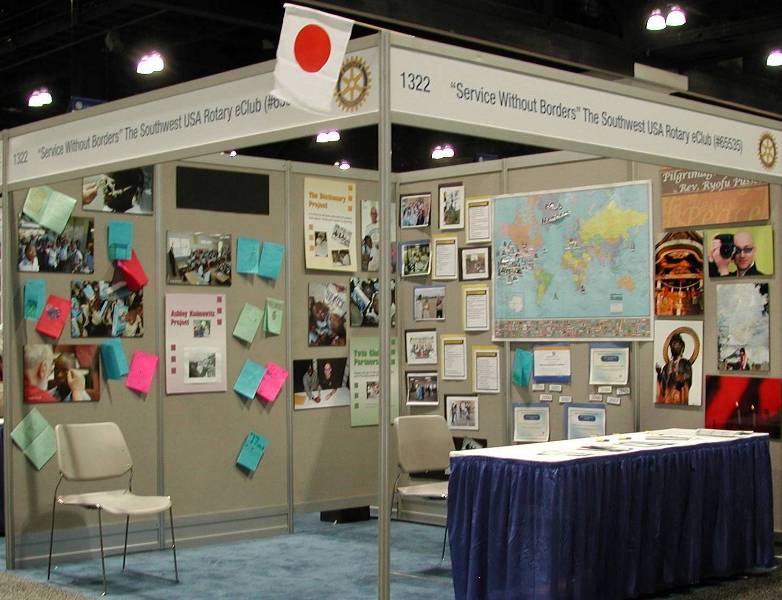
.JPG)
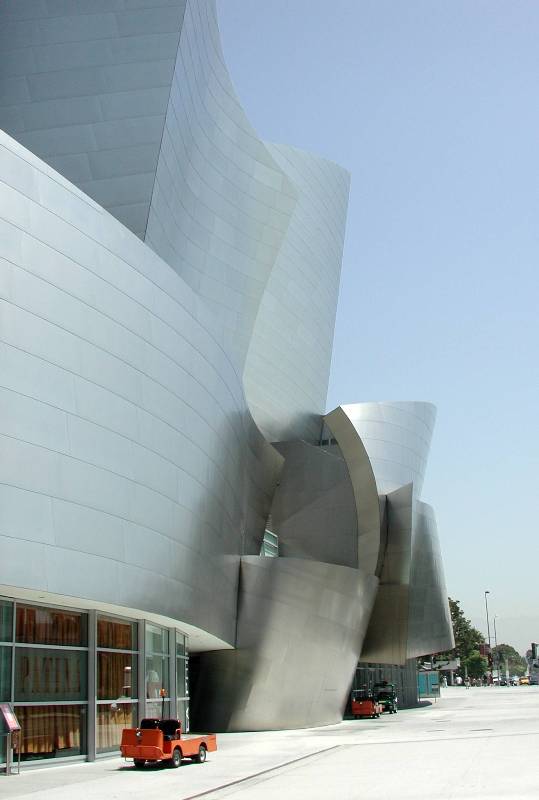
.JPG)

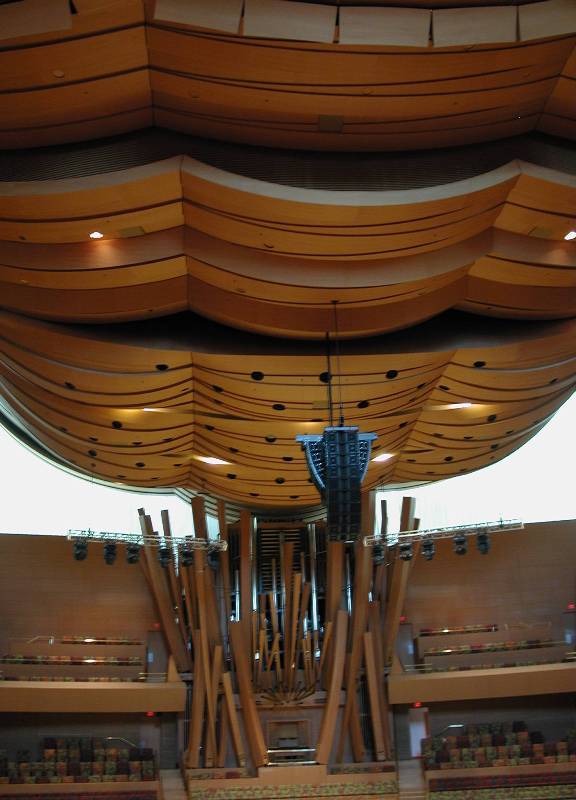

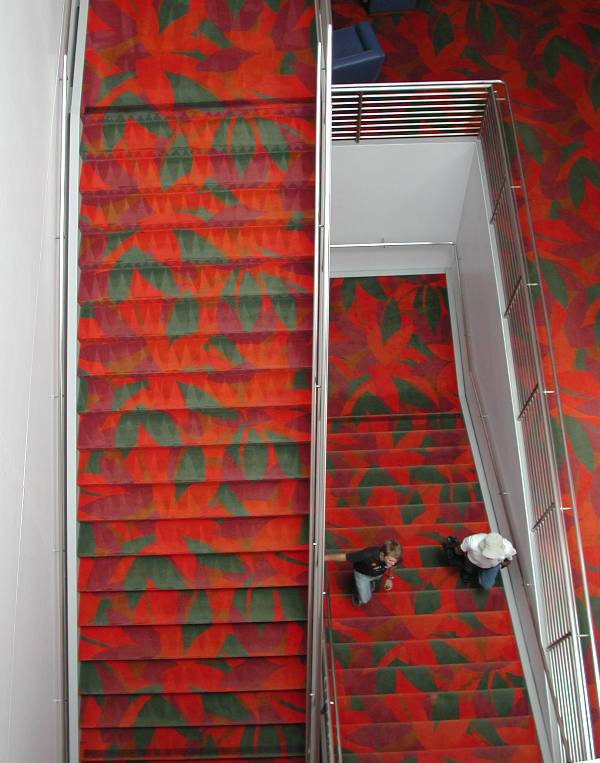
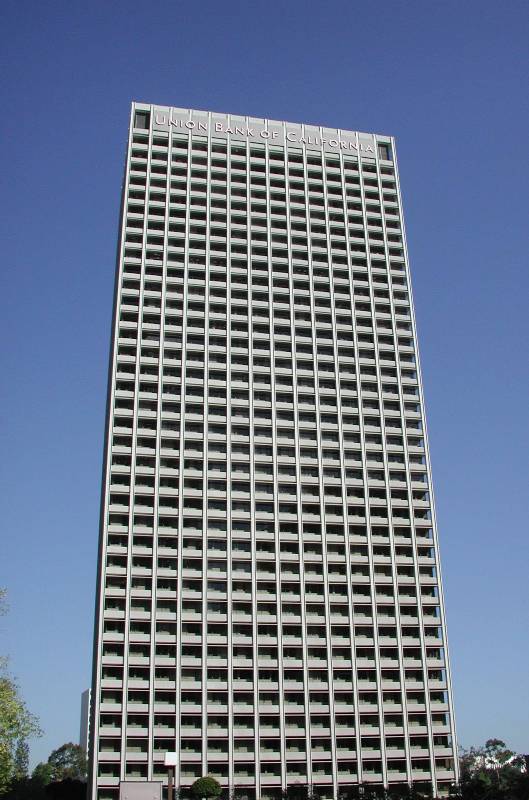
.JPG)